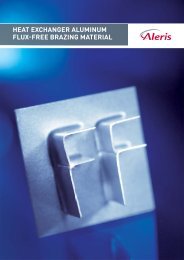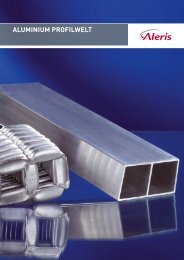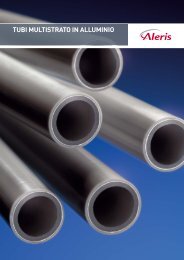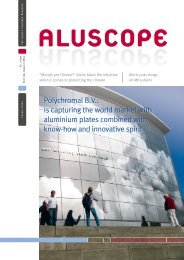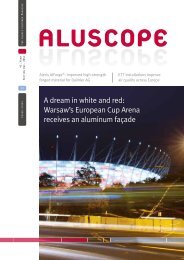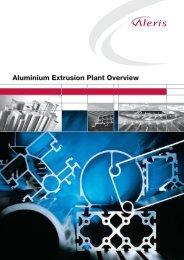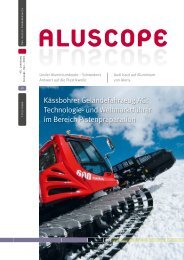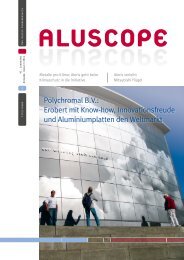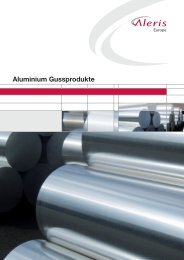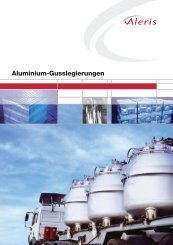Create successful ePaper yourself
Turn your PDF publications into a flip-book with our unique Google optimized e-Paper software.
Melt quality and melt cleaning<br />
All factors which come under the general<br />
term of “melt quality” have a direct<br />
effect on the quality of the casting to be<br />
produced. Inversely, according to DIN EN<br />
1706, the cast samples play a valuable<br />
role in checking the quality of the melt.<br />
Most problems in casting are caused by<br />
two natural properties of liquid melts, i.e.<br />
their marked tendency to form oxides<br />
and their tendency towards hydrogen<br />
absorption. Furthermore, other insoluble<br />
impurities, such as Al-carbides or<br />
refractory particles as well as impurities<br />
with iron, play an important role.<br />
As mentioned in other sections, the<br />
larger oxide fi lm can lead to a material<br />
separation in the microstructure and,<br />
consequently, to a reduction in the load-<br />
bearing cross-section of the casting.<br />
The solubility of hydrogen in aluminium<br />
decreases discontinuously during the<br />
transition from liquid to solid so that as<br />
solidifi cation takes place, precipitating<br />
gaseous hydrogen reacting with existing<br />
oxides can cause voids which can<br />
in turn take various forms ranging from<br />
large pipe-like blisters to fi nely-distributed<br />
micro-porosity.<br />
24<br />
<strong>Aluminium</strong> <strong>Casting</strong> <strong>Alloys</strong><br />
Critical melting temperatures<br />
in relation to the segregation factor<br />
Temperature<br />
[°C]<br />
650<br />
640<br />
630<br />
620<br />
610<br />
600<br />
590<br />
0.8 1.0 1.2 1.4 1.6 1.8 2.0 2.2<br />
Segregation factor [(Fe)+2(Mn)+3(Cr)]<br />
Al Si8Cu3 Al Si6Cu4 Al Si12(Cu)<br />
To achieve good melt quality, the for-<br />
mation of oxides and the absorption<br />
of hydrogen have to be suppressed as<br />
much as possible on the one hand, while<br />
other hydrogen and oxides have to be<br />
removed from the melt as far as possible<br />
on the other, although this is only<br />
possible to a certain extent.<br />
Figure 6




